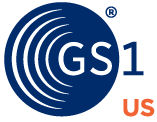Here are additional resources that might interest you:
June 26, 1974, was a historical milestone that changed the shopping experience: That's the date the first item with a barcode was ever scanned at point of sale. Juicy Fruit gum at a supermarket in Troy, Ohio, became the first product scanned with a UPC code. Now UPC codes get scanned more than 10 billion times daily.
In the 50 years since then, barcodes have stayed the same—until now. GS1 US® is leading a major change to barcode functionality that will improve the way businesses interact with customers.

At a recent Inc. magazine event held at SXSW, Inc. contributor Abigail Bassett moderated a panel featuring Gena Morgan, Vice President, Standards, GS1 US; Jayson Berryhill, Co-Founder and CEO of Blockchain-Based Traceability Solution Wholechain; and Victoria Ho, Founder and Chief Storyteller of Food and Beverage Brand Strategist Sherpa CPG.
5 Takeaways From SXSW 2024
1. 2D Barcodes Will Improve Traceability
Whereas UPC barcodes now are only used to identify prices at registers, 2D (two-dimensional) barcodes (such as QR codes) hold much more information. Consumers are already scanning 2D barcodes on product packaging to bring up links with details about products they’re holding, and that same 2D barcode will soon be scanned at checkout too. GS1 US and the retail industry expect this to grow and even eclipse UPC use in the next few years.
Packaging is the “ground zero” of discoverability and consumers learning about a brand’s story, says Victoria Ho, Founder and Chief Storyteller at Sherpa CPG, and having a more functional barcode will allow brands to share more about where their products and ingredients come from. “The lovely thing about traceability is that it’s a direct seed to storytelling in the sense that traceability helps to create trust, trust creates loyalty, and through that loyalty is how brand affinity really starts,” she says.
2. Expectations Surrounding Traceability Have Grown
Largely due to regulations, retailers and brands are asking more questions about the source and origin of their products, Jason Berryhill, Co-founder and CEO of Wholechain says. “In the past, the question might’ve been ‘Where does this salmon come from?’ Today, it’s ‘Where does the soy come from that goes into the feed that goes into the salmon farm that goes into the salmon that goes into the store?’” This brings unparalleled visibility into a product’s origins and all the steps in its journey for regulators and can ultimately help consumers feel good about their buying choices.
The more information available about the supply chain, the better brand managers can determine best-by and expiration dates on items like food and cosmetics, and they can avoid waste as well.
3. GS1 Standards Will Help Businesses That Are “Doing It Right”
There’s growing suspicion about greenwashing and other product claims that have turned out to be merely marketing slogans. Having standards that enable brands to disclose more on their barcodes creates accountability.
Ho says, “What these standards do is allow brands that are really operating with integrity to show proof behind their supply chain,” which may especially help lesser-known companies. “Every consumer wants to support emerging brands, but they’re not sure if you’re making shampoo in your bathtub.”
In addition, it can give consumers another checkpoint besides certifications such as “USDA* organic,” which may be financially out of reach for emerging brands.
4. 2D Barcodes Will Keep Buyers in the Store
Consumers often research online, which leads them to also buy online even after browsing in a store. But having all the information they need on the packaging helps to keep them in stores. In addition, brands can use 2D barcodes to send coupons and promotions specific to locations straight to consumers’ phones.
5. Expect 2D Barcodes to Be Ubiquitous
GS1 US® expects the use of 2D barcodes to reach a critical mass in 2027—retailers will be capable of scanning the same code that consumers are scanning with their smartphones, effectively freeing up more packaging space. Gena Morgan, Vice President of Standards at GS1 US, says UPC codes will still be valid, but she believes consumers will expect and welcome the upgrade: “If a brand doesn’t want to move to a 2D code and all the power that comes behind that, the retailers may not care—it could still be scanned—but the consumers will demand it,” she says. “It’s not a huge lift ...so we expect that most brands will.”
This article originally appeared on Inc.com, April 4, 2024.
*United States Department of Agriculture




